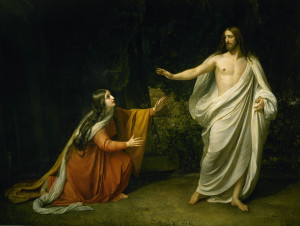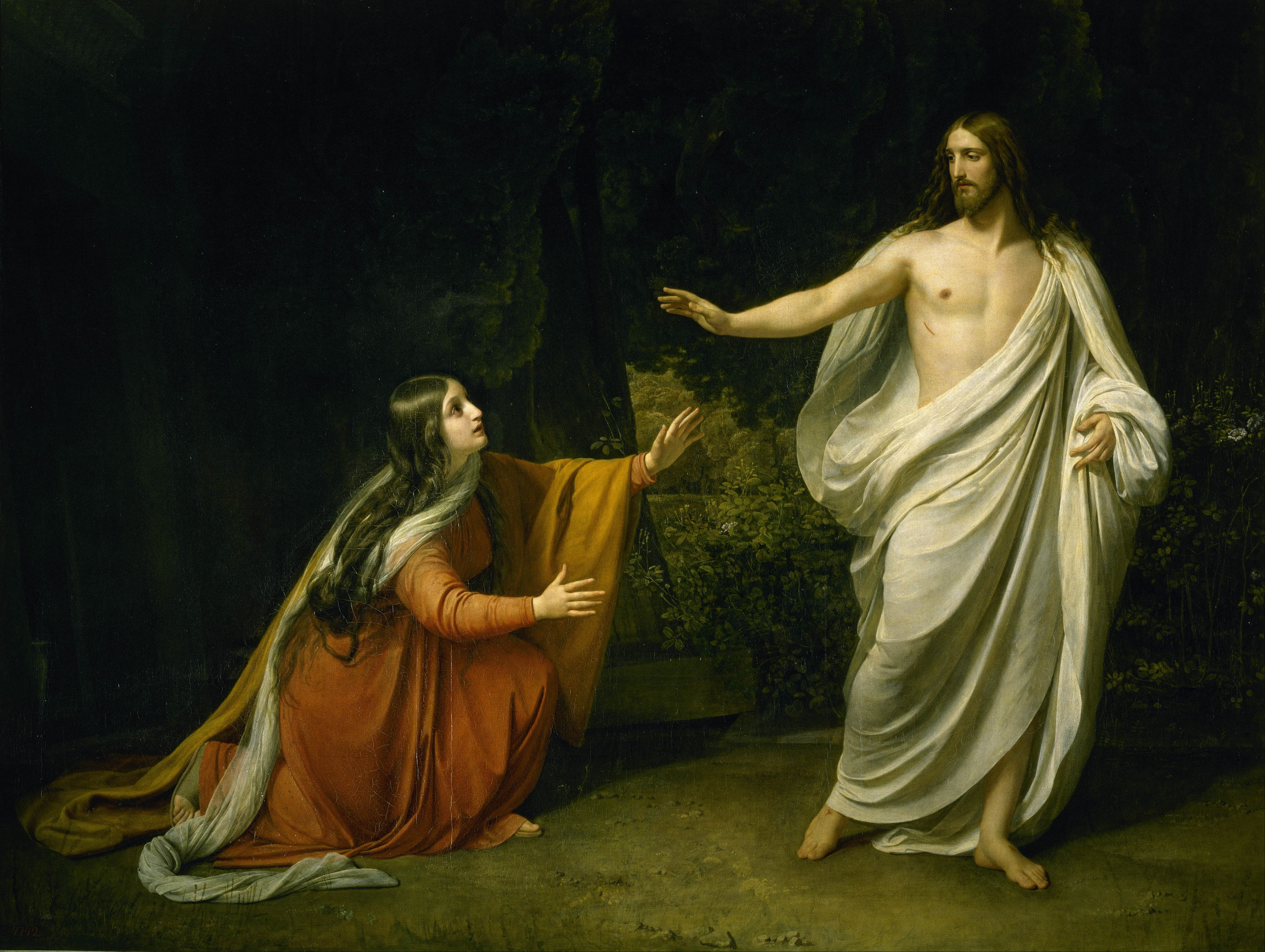 The gospels of the Easter Octave describe not just an event, but even more so, a journey. We are tempted to think that the disciples and apostles, having seen the risen Lord, were immediately confirmed in their faith and stripped of all doubt.
The gospels of the Easter Octave describe not just an event, but even more so, a journey. We are tempted to think that the disciples and apostles, having seen the risen Lord, were immediately confirmed in their faith and stripped of all doubt.
But that is not the case. Nearly all of the resurrection accounts make it clear that although seeing the risen Lord was “mind-blowing,” it was still only a beginning. As it is with any human experience, no matter how intense, encountering the risen Lord was something that the disciples needed to process. They needed to come to live its implications in stages.
This description of a journey, of a coming to resurrection faith in stages, is presented in the resurrection accounts. We notice that the first awareness occurred “when it was still dark” and “at the rising of the sun.” But as we know, it does not suddenly become fully light at dawn. Rather, the light manifests itself and increases over time. And so it is with the awareness of the resurrection. It begins to “dawn” on the disciples that He is Risen, truly; He has appeared to Simon.
The first reports are murky and there is a lot of running around: Mary Magdalene to Peter and John, Peter and John to the tomb, the women to the rest of the apostles. Yes, there is an awful lot of running about! It is still dark and the “cobwebs” of recent sleep aren’t completely gone; the light is just dawning, not at full-noon strength.
The disciples wonder what it all means and how it has changed/will change their lives. The answers to questions like this will require a journey; they are not to be answered in a mere moment.
In one Gospel there is a beautiful line that describes the experience well:
Mary Magdalene and the other Mary went away quickly from the tomb,
fearful yet overjoyed (Matt 28:8).
Yes, such a beautiful description: fearful yet overjoyed (φόβου καὶ χαρᾶς μεγάλης (phobou kai charas megans = fearful and of great joy))!
What is one to make of all this? He is alive! Yet what does this mean? One’s life is changed, but how? One is filled with joy, yet draws back in a kind of reverential fear at the unknown, the unexperienced.
And so we see the women, encountering the risen Jesus on the road and they are fearful yet overjoyed. And again, while we might suppose that such an appearance would “seal the deal,” it is not that simple. Consider the following occurrences in the aftermath of the resurrection appearances and notice that a journey of sorts is required to make sense of it all.
- Mary Magdalene doesn’t even recognize Jesus at first, but has to have her eyes adjusted by the faith that comes from hearing—in this case hearing her name, Mary, spoken by Jesus.
- She also has to make the journey from merely clinging to Jesus as “Rabboni” and running to others to proclaim Him by saying, “I have seen The LORD.”
- The disciples on the road to Emmaus don’t recognize Jesus at all until their eyes are opened in the Breaking of the Bread.
- When the Apostles first see Jesus they draw back and think that they are seeing a ghost. He has to reassure them and clarify things for them.
- Simon Peter, even after seeing the Lord several times, falls away from his mission and announces to the others that he is going back to fishing. The Lord has to stand on the shore and call him anew from his commercial nets to the sacred shepherding of the Petrine Ministry.
- Even after witnessing forty days of appearances by Jesus and having been summoned to the mountain of the ascension, some see and believe but others still doubt.
- And after the ascension, the day of Pentecost still finds the apostles and disciples huddled behind closed doors. Only after the coming of the Holy Spirit are they really empowered to go forth.
Yes, there is more to experiencing the resurrection than mere sight. Faith comes by hearing and deepens by experience. They have to make a journey to resurrection life and so must we.
Even for us, who were born in the teaching of the resurrection, the truer and deeper meaning of it all is not something that can be supplied simply by the reading the Catechism; it is grasped through a journey we must make.
As a priest and disciple, I have both observed and experienced that Good Friday is powerful and moving for many people. Most of us know the cross; we have experienced its blows and its presence is quite real and plain to us. On Good Friday there are often tears at the Stations of the Cross, the Trae Horae, and the evening service of the Lord’s Passion.
But come Easter Sunday morning the experience seems less certain. People are joyful, but somewhat unsure of why or how. The joy of Easter seems more remote than the brooding presence of Good Friday or the gloomy silence of Holy Saturday. Though those days are unpleasant, they are familiar. But Easter Sunday is different. What does it mean to rise from the dead? What are we to do in response? During Lent we fasted and undertook practices to focus us. But Easter is more open and vacuous: Joy! Alleluia! Now what?
It remains for us to lay hold of this new life that the Lord is offering to us. It is not enough to think of or see the resurrection as an event of two millennia ago. It is that, but it is so much more. It is new life for us. We rise with Christ.
How and what does this mean? That is discovered through the journey. It is the deeper and more personal experience of the historical event that the Lord accomplished for us. He has raised us to new life.
In my own journey I have had to move from the event itself to a deeper, personal, true experience of that event. I have come to experience the new life that Jesus died and rose to give me. I have seen sins put death and new graces come alive. I am more chaste, generous, joyful, hopeful, serene, and zealous. My mind is clearer; it is new. My priorities are in better order and I have clearer vision. My heart is more spacious. I have learned more deeply of God’s love and mercy for me, and can thus show it more to others.
Yes, this is the journey to the new life that the Lord died and rose to give me. Good Friday and the cross are rather obvious to most of us, but Easter Sunday takes more time to fully comprehend. It requires a journey through which we, like the early disciples, progress from fear to faith, from darkness to light, from the sleepiness of the early morning to the alert faith of midday.
It is the journey toward a true and lasting Easter. We never cease to be overjoyed, but our awe deepens from one that is bewildered in the face of the unknown to one that bespeaks knowing wonder at what the risen Lord is doing in our life. Our previously cringing fear becomes the holier fear of reverence and love.
Yes, Easter is an event, but it is also a journey. The faint light of early dawn gives way in stages to ever brighter awareness as we lay hold of the new life that Christ died and rose to give us. There is a beautiful line in the King James translation of the Bible that captures Simon Peter’s journey, which at that time was only just beginning:
Then arose Peter, and ran unto the sepulcher; and stooping down, he beheld the linen clothes laid by themselves, and departed, wondering in himself at that which was come to pass (Luke 24:12).
Peter now knows, even as he is known. For you and me, the journey of wonder, awe, and experience continues to unfold. I know more today than ever before (thank you, Lord), but so much more needs to unfold. It will, by God’s grace and in God’s time.


I always wondered about why they should be so shocked. After all, they saw Jesus raise Lazerus from the dead, although he was not resurrected. They also saw and knew that Jesus revived the Centurion’s daughter, who was “asleep” i.e. dead. They saw him perform so many other miracles, like restoring a blind man’s sight, or curing this or that. Therefore, why was the resurrection such a surprise? What was with Thomas? Peter knew that Jesus was the Messiah, but I don’t understand why this was such a shock, especially after watching Lazerus come out of the tomb. Jesus predicted this would occur. I am a believer, but I have these questions. DPA
Msgr
In regard to Emmaus we might reflect that books were developed because they enabled random access of scripture to illustrate that Jesus fulfilled the prophesies of the Old Testament.
The origin of books are associated with the rise of Christianity. There were no books but only scrolls found at Pompeii (79AD).
Roberts and Skeat (1983) identified the growth of the book (known as a codex – plural codices – from the Latin caudex – trunk of a tree or block of wood because that is what a codex looked like) with the rise of Christianity.
The advantage of a codex is that of random access as distinct from the sequential access of a scroll. Random access was used for Eucharistic services (the term Mass dates from the C7th) to enable scriptural readings showing how Jesus fulfilled the prophesies of the Old Testament.
The template of that was provided by Jesus on the road to Emmaus in Luke 24:25-27
“He said to them, “How unwise and slow you are to believe in your hearts all that the prophets have spoken! 26 Didn’t the Messiah have to suffer these things and enter into His glory?” 27 Then beginning with Moses and all the Prophets, He interpreted for them the things concerning Himself in all the Scriptures.” https://www.biblegateway.com/passage/?search=Luke%2024:13-35
Justin the Martyr (c100-c165) wrote to the pagan Emperor, Antoninus Pius,
around the year 155 in which he describes the Eucharistic sacrifice in sections 66 and 67.
“.. 67.. And on the day called Sunday, all who live in cities or in the country gather together to one place, and the memoirs of the apostles or the writings of the prophets are read, as long as time permits; then, when the reader has ceased, the president verbally instructs, and exhorts to the imitation of these good things….”
“…But Sunday is the day on which we all hold our common assembly, because it is the first day on which God, having wrought a change in the darkness and matter, made the world; and Jesus Christ our Saviour on the same day rose from the dead. For He was crucified on the day before that of Saturn (Saturday); and on the day after that of Saturn, which is the day of the Sun, having appeared to His apostles and disciples, He taught them these things, which we have submitted to you also for your consideration.”
http://www.newadvent.org/fathers/0126.htm
St Justin describes the Mass which uses the template received from Christ Himself at the Emmaus discourse. Books developed because Jesus Christ fulfilled the Old Testament prophesies, was crucified rose from the dead and ascended in to heaven, and the random access of books facilitated our instruction on Christ fulfilling the prophesies was and is taught then and now at every Holy Mass.